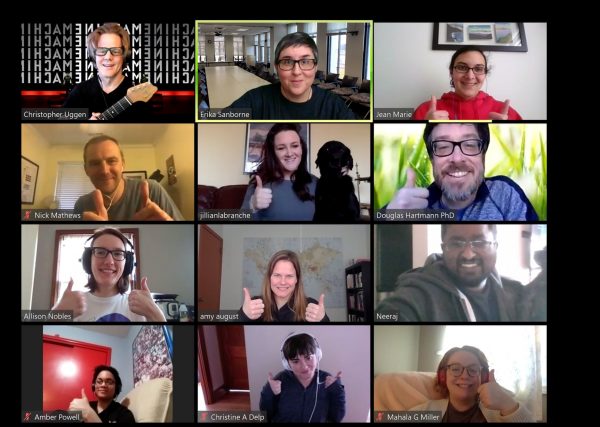
As instructors move their courses online, we at The Society Pages want to help out by offering a guide to our site. We have lots of sociological content that can be used in teaching, from new research coming out of journals to podcast interviews with sociologists. We strive to make our content clear, concise, and public-facing — perfect for undergraduates!
What kind of content do we have? (and how can you use it to teach?)
“There’s Research on That!” – In this blog, we curate sociological research that speaks to things that are happening in the world.
- Have students read “#SayHerName and Black Women’s Experiences with Police” for an overview of research on Black women’s experiences with police, including distrust of police and the challenges that come with motherhood. Then, ask them to respond with a short post about the racialized and gendered challenges that lie ahead in developing police-community trust.
“Discoveries” – In this blog, we review new and exciting research coming out of peer-reviewed journals, vetted and summarized by our graduate editorial board.
- Have students think about which groups are having more same-sex sex and register their hypotheses through an online poll (available in Zoom or Google Hangouts). Then have them read “Who Is Having More Same-Sex Sex?, a summary of new research in Gender & Society that shows that younger people demonstrate more same-sex sexual behavior than older people, with a greater increase for women and black men. Finally, encourage them to explain why they think women are reporting more same-sex sex by collectively editing a set of google slides.
“Teaching TSP” – We produce a variety of teaching-related posts, from classroom activities and assignments, to new research published on teaching and learning.
- Adapt the “Introduction to Sociology TROT Project” to have students write their own post or outline based on “There’s Research on That!” articles.
- Draw on tips from “Teaching Writing with 5-Minute Workshops” to help students craft their sociological voice through writing.
“Features” – Long-form articles meant to give a broad, social scientific view on an issue or topic without the usual academic jargon. This category includes white papers, special features, and roundtables. Roundtables bring together several sociologists and social scientists to give context to what’s happening in the world.
- Have students read “Re-evaluating the “Culture of Poverty,” then discuss how the sociologists interviewed might make sense of the economic inequalities exacerbated by the coronavirus.
“Office Hours” – Podcast conversations with sociologists about their research, often from recently published books.
“Clippings” – When sociologists’ work gets picked up by the news, we highlight the coverage. These articles emphasize the usefulness of sociological thinking for understanding real-world events.
“Editors Desk” – Writing by our Editors in Chief, Doug Hartmann and Chris Uggen, as well as our weekly roundups where you can read what we’ve published that week. You can sign up for our roundups HERE.
How can I find the content I’m looking for?
- Use the search icon (looks like a magnifying glass) in the top right corner of the banner at the top of the page. You can search by keyword, blog name, or author name.
- Search on a specific blog. From each blog’s page you can use the search icon (usually a magnifying glass) to search only content on that specific blog. For example, from the “Discoveries” page, you can search only “Discoveries” posts. You’ll also notice on the “Discoveries” and “There’s Research on That” pages, you can also search by category.
- Browse our topics pages. On the homepage, you’ll notice tabs labeled with different topic areas commonly studied by sociologists (health, gender, crime, etc.). Each topic page features curated content at the top of the page, recent posts that relate to that topic on the lower left side of the page, and places to find data and news about that topic on the lower right side of the page (if you are using the desktop site).
